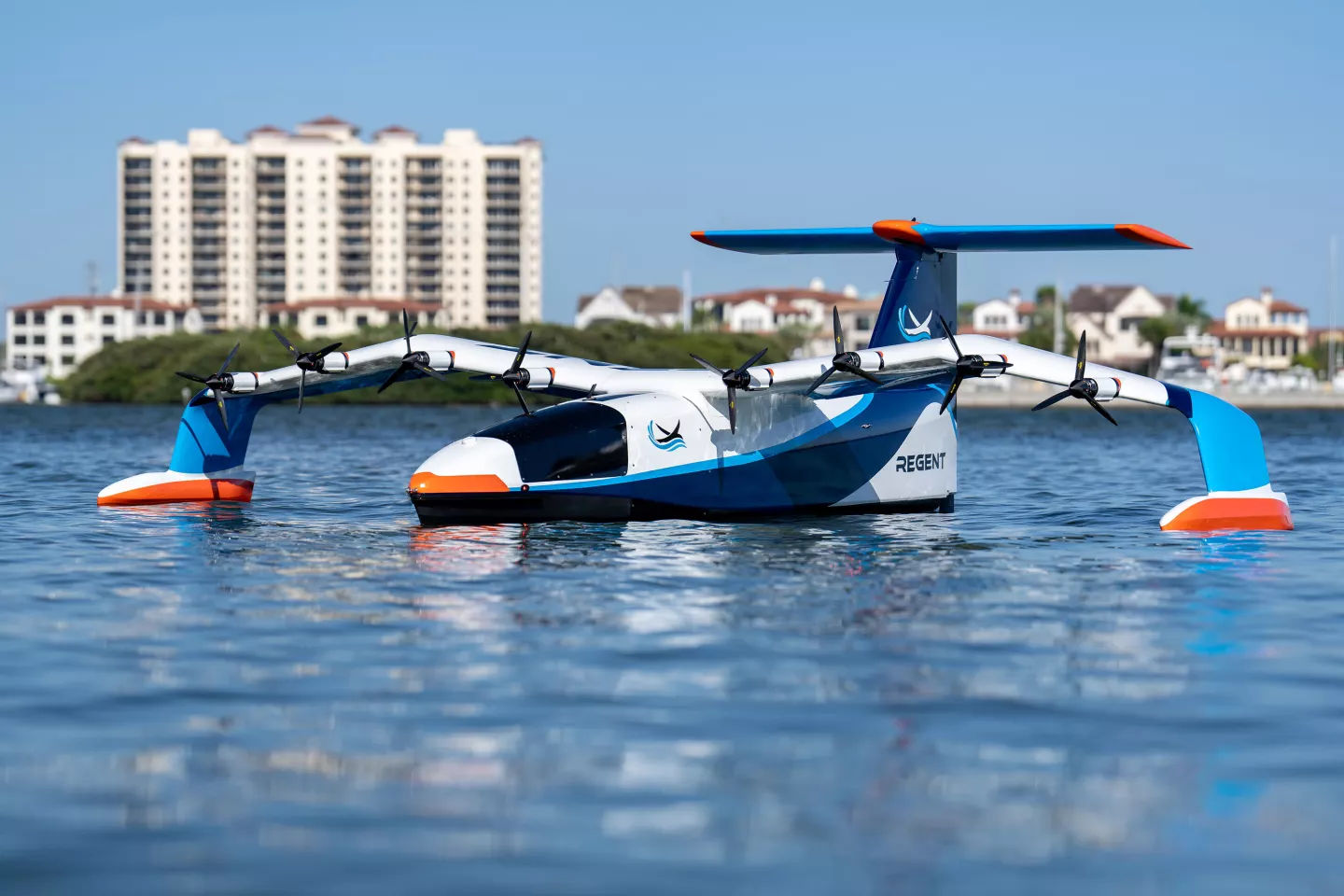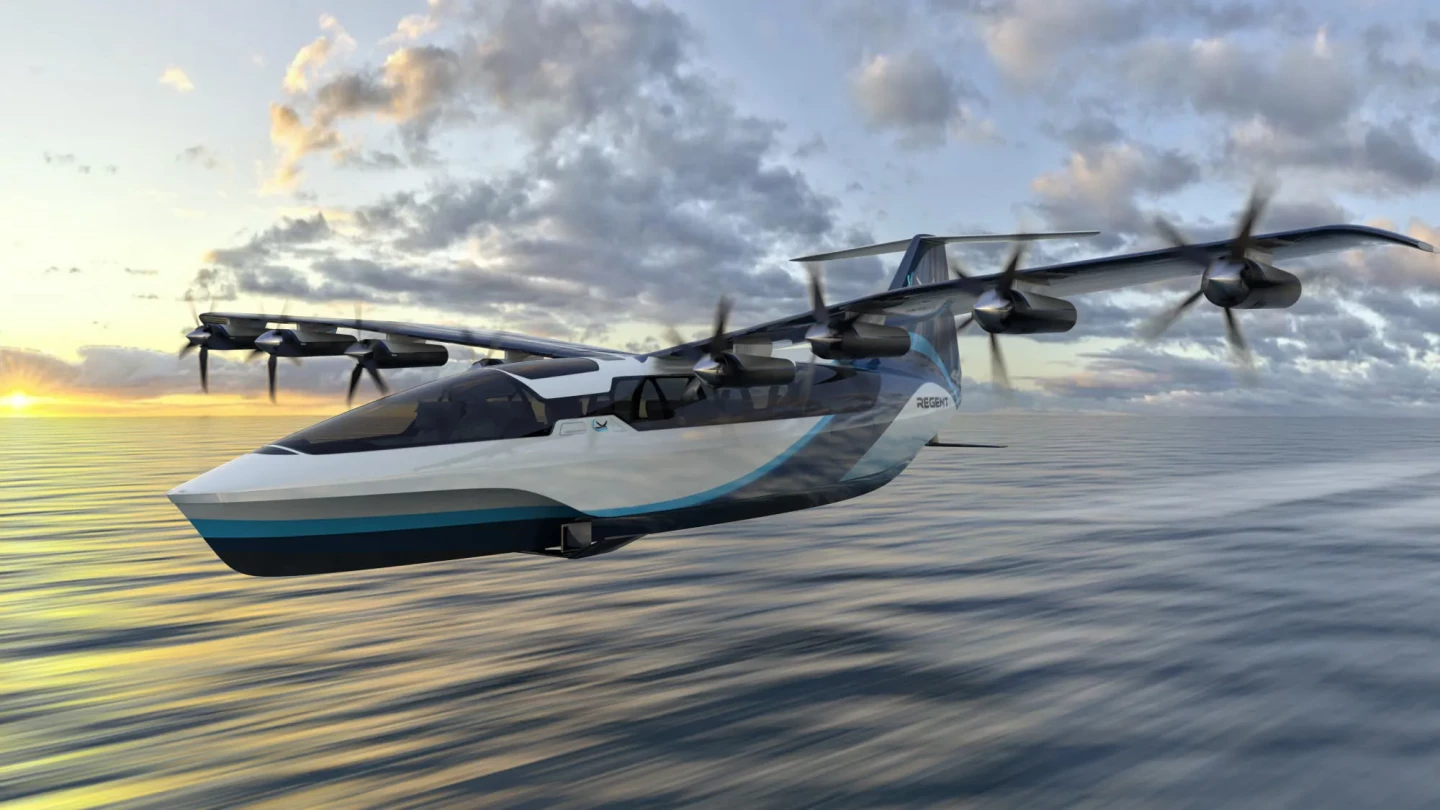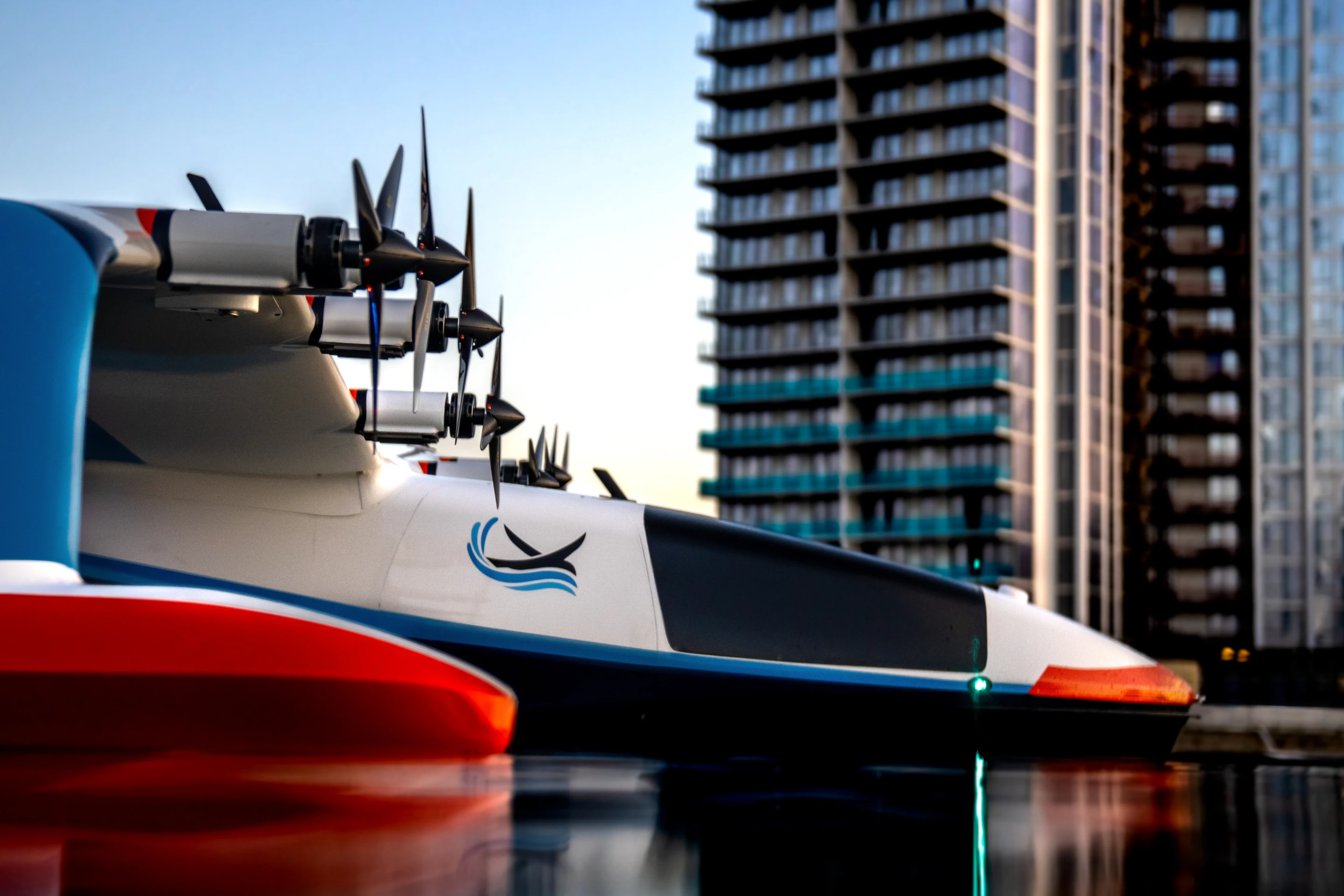Regent has released video of its remarkable Seaglider prototype in flight testing. The first machine to combine the efficiency advantages of ground effect and hydrofoiling in a single design, it promises revolutionary speed and range in coastal areas.
Wing-in-ground effect (WIG) aircraft such as the Soviet-era Ekranoplan have shown promise in the past, but they're yet to take off, so to speak, as a mainstream form of transport. These low-flying birds ride on a cushion of air between their wings and the surface, which gives them a significant lift and efficiency boost over regular planes flying higher in the air – as long as they stay within their own wingspan of the surface beneath. This extreme altitude restriction means that while ground-effect aircraft could fly over land, it's too dangerous for regular operations, and they typically stay over water.
The numbers haven't been attractive enough to date, but the era of electrification brings a set of new incentives to the game. Electric boats are struggling to prove their worth; batteries simply don't hold enough energy to push through the tough medium of water for long distances. Early electric aircraft struggle to deliver useful range with a decent number of passengers on board, too. Regent looked at this, and saw a situation where the efficiency of the old ground-effect vehicle could give it a genuine commercial advantage, if paired with another, more recent technology.

That would be the hydrofoils. Regent's Seaglider is designed to taxi slowly like a boat, with its V-shaped hull/fuselage in the water. As it speeds up for takeoff, it rises out of the water on a set of hydrofoils. This takes the cabin up out of the waves, making it glide smoothly above the surface for a comfortable ride. It also vastly reduces drag, and thus also the energy required to push through the water, so it uses much less energy reaching takeoff speed for wing-borne flight. The hydrofoils fold out of the way once the aircraft is out of the water, and descend again for landing.
The result, claims Regent, is pretty remarkable: a quick, quiet, comfortable, 14-seat electric coastal transport capable of covering distances up to 180 miles (~300 km) at speeds up to 180 mph (300 km/h) with zero emissions – using today's commercially-available batteries. It should be cheap – half the operating cost of an aircraft, and lightning-fast, at some six times the speed of a comparable boat. And the concept is scalable, too; the old Ekranoplans became more efficient with size, and these should, too. Regent has its eye on versions up to at least 150 passengers.
The market sure seems to be responding; Regent says it's taken pre-orders for an extraordinary US$7-billion worth of sales, including a decent swag of deposits on aircraft of various sizes.

Now, the company has shown the first video of its prototype, a quarter-scale Seaglider with a wingspan around 18 ft (5.5 m). Embedded below, the video shows the machine in slow taxi, fast, smooth hydrofoiling, takeoff, wing-borne cruise and landing.
It's all shot in fine weather and relatively smooth seas, but it's certainly impressive to see how gracefully these things hydrofoil. Takeoff and landing look a touch more exciting, and indeed we're interested to learn what the experience is like in the cabin as they hit the water and slow down – but it'll likely be a friendlier landing than that of a seaplane, and there are plenty of those in service.
Regent has already raised the $18-odd million it needs to take the next step: building a full-scale prototype with a 65-ft (19.8-m) wingspan for manned trials, which it hopes to commence in 2024. It hopes to be in mass-production, and for the Seaglider to be taking paying passengers, by 2025.

That's an ambitious timeline, but Regent has brought serious money on board, and has already demonstrated its ability to move at breakneck pace. And it has a considerable leg up over next-gen aircraft, such as electric VTOL air taxis, by virtue of the fact that it can certify this thing as a WIG maritime vessel, avoiding the bottleneck of FAA type certification.
“People have been attempting to make wing-in-ground effect vehicles viable for 60 years, and in 15 months we have gone from a drawing on a napkin to the first successful flight.” said Mike Klinker, Regent CTO and co-founder, in a press release. “Regent is the first team in history to overcome the deficiency of low wave tolerance with past designs by combining high-speed hydrofoils with ground-effect flight – a crucial innovation that will revolutionize coastal transit. No vehicle in history can match the combined wave tolerance and speed of our seaglider.”
Check out the video below.
Source: Regent













